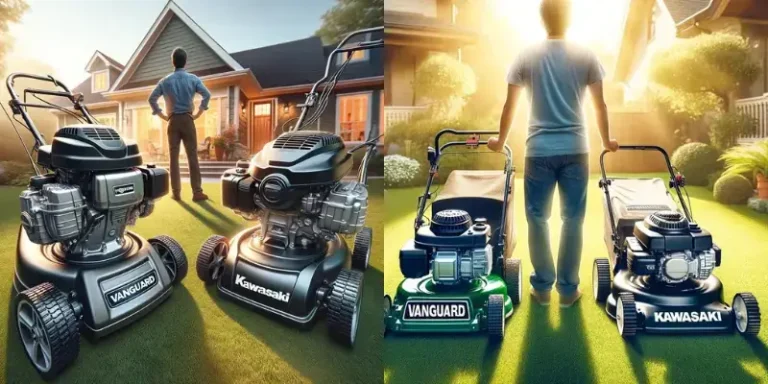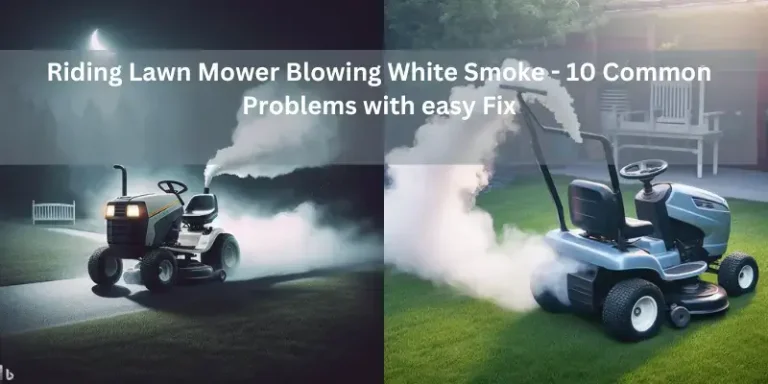Why is My Neighbor’s Lawn Greener Than Mine?
You see it: green and vibrant, out of the corner of your eye, through the window—the neighbor’s lawn. As you try to think back to the last time you actually watered your grass, a little bit of lawn envy starts creeping in. All you see is the height at which it seems to be growing in contrast to the neighbor’s, and how it seems to be so vibrant and full of life. “The grass is always greener on the other side,” as they say. What if your lawn was the one others envied? So, let’s start on turning your yard into the talk of the neighborhood!
A well-kept lawn is beautiful for more reasons other than being a visual delight. It shows care and dedication; a bit of know-how. Find out the secrets of having a brilliant lawn, and your grass might be as green and inviting. That’s true. It’s not just a pleasing sight; it adds great curb appeal to a property and, therefore, value. Ready to get started? Let’s dive into the factors that make your neighbor’s lawn so green and how you can achieve the same results.
Unveiling the Secrets: Top Reasons Your Neighbor’s Lawn Might Be Thriving
Watering Techniques & Timing
Proper watering is essential to healthy lawns. This encourages root growth in the soil. On the other hand, shallow and frequent watering results in weak root systems. Watering is best done at the dawn hours, when there is still low temperature and the wind has not started. A deep and infrequent watering approach guarantees the water reaches the roots without any evaporation in the heat of the day.
Finally, a good investment in a proper sprinkler system will be worth your money. Systems that do the work coverage-wise and schedule in an adjustable manner might be very critical in ensuring the soil receives water evenly. Also, monitoring the amount of rainfall and correcting the watering regime is very important to be sure you don’t overwater; it encourages diseases and growth of mold in your lawn.
Grass Selection Matters
The right kinds of grass for climate and soil conditions can really make a difference. Cool season grasses, like Kentucky bluegrass, thrive in cool climates. Warm-season grass, like Bermuda, thrives in hotter climates. In this way, a better, more resilient lawn is easily achievable if exactly what the lawn needs is assessed and the best kind of grass matched with it. This may also be a determining factor with respect to the best kind of grass to grow in your lawn, from soil tests.
Also, with knowledge of the growth habits of the various grasses, you’d be able to better maintain your lawn. Some grasses send out rhizomes or stolons and will creep to naturally fill in the low, weak areas, while others bunch and may require more frequent overseeding. Being aware of these characteristics may help one keep the lawn fuller and healthier throughout the year.
Mowing Magic
One of the major factors that significantly influence mowing is height. The different types of grass have their own preferred heights for mowing: for instance, Bermuda grass prefers to be mowed to about 1-2 inches, while fescue prefers 3-4 inches. The management of grass that is left too short by mowing is a stressful activity for plants, and the stressed plants are more predisposed to diseases as well as the ability to stand drought. Allowing the grass to be too tall may provide a habitat for pests and makes the lawn appear untidy.
Mulching grass clippings can also return nutrients back to the soil, which is healthy for the lawn. Healthy soils lead to less necessity for additional fertilization, and mulching also helps keep soil wet. Frequent sharpening of blades makes it possible to mow with cleaner cuts that result in a reduction in the incidence of disease in lawns due to ragged edges. Proper height of mowing coupled with correct mulching produces the best environment for your turf to flourish.
Weed Controlling in Your Lawn
Weed control is an important aspect to consider in maintaining your lush turf. Weeds are grass competitors; they compete with grass for both nutrients and water and light. We can reduce their presence by using manual or selective herbicides. Regular lawn care practices, such as frequent mowing and proper fertilization, will enhance the elimination of weeds.
Pre-emergent herbicides can also be useful in preventing weed seeds from germinating, therefore taking a proactive approach toward the control of weeds. Of course, for those who are more into natural ways, organic mulch and proper aeration of the lawn can substantially cut down on the proliferation of weeds. Knowledge of the common types of weeds in your area and the pattern of growth can give a clue as to how best to control them.
Fertilizer Fundamentals
The correct fertilizer formula needs to be applied at the right time for lawns. Slow-release fertilizers are fed gradually, while fast-release products provide a quick shot of nutrients. Steady growth and a lush color are guaranteed by understanding the nutrient need of your grass type and applying the right fertilizer. A soil test may identify any nutrient deficiencies and help direct your choice of fertilizers.
Just as important as the choice of fertilizer is the timing of application. This should be done during the growing season so that the grass can take full advantage of the nutrients available. Over-fertilization can also make a lot of thatch build up; thatch could, in turn, pollute nearby water bodies. A well-rounded schedule of fertilization will enable one to keep a lawn that is green and healthy looking with no adverse effects.
Dog Duty Dilemmas
Dog droppings can leave unsightly brown spots and may even kill grass in the lawn. Training the pets to use a designated area and cleaning waste up promptly will help reduce damage to the lawn. In order to recover the area from spots already occurring, it is suggested to dilute the area with water and reseed. There are also pet solutions, such as dog rocks or pet-safe lawn treatments, to help minimize the effects of dog urine.
In addition to the waste issue, there is a real physical effect that dogs have on the lawn. There will be compressed areas and wear in high traffic areas. In a managed environment, it is recommended that specific play areas are provided and that locations are rotated to manage wear and tear. Regular lawn maintenance such as aeration and overseeding will also help in repair and prevention of pet damage.
The Power of Mulch
Mulching helps to conserve soil moisture, reduces the growth of weed plants, and moderates soil temperature. A liberal spread of mulch over plants and garden beds provides a far healthier environment for grasses and plants. Besides, when it decomposes, the organic mulch, such as wood chips or compost, naturally reintroduces these important nutrients into the soil.
It also improves the aesthetic appeal of your yard and garden areas by giving that clean, neat appearance. Mulch can also decrease the rate at which soil erosion occurs in cases of downpour and protect the roots of plants from extreme temperatures. Including mulching in your regular maintenance program for the lawn will boost the general health and appearance of the lawn.
Aeration Advantage
Aeration is the process in which soil is loosened to enable grass roots to penetrate and have access to air, water, and soil nutrients. It removes soil compaction and encourages the growth of healthy roots. Annual aeration of your lawn can result in a much stronger, healthier grass. The most effective method is to utilize a core aerator to pull out little plugs of soil.
Aeration stimulates root growth and infiltration of water. In this way, your lawn will be able to accept much less water, hence much less runoff. Aeration also helps in the decomposition of the thatch, which is a layer of dead grass and roots that may accumulate on the surface of the soil.
Removing & Controlling Thatch
Thatch is a layer of dead grass and roots. It can actually block water and nutrients from entering the soil. If too much builds up in your lawn, it can harm your lawn’s health. The best management practice for dealing with thatch problems and to increase turf vigor would be dethatching or the use of a core aerator. In most instances, regular dethatching in either spring or fall will keep thatch under control.
One way to prevent the build-up of thatch is to ensure there are proper good management practices of the lawn. Do not over-fertilize the grass; the soil should be well aerated. Otherwise, use the types of grass that do not form thatch for a healthy lawn. Maintain manageable levels of thatch and the grass in your lawn will easily absorb water and nutrients.
Banishing Bald Patches
Bald patches in lawns can result from various issues, such as pests, diseases, or heavy foot traffic. Addressing the underlying cause and reseeding or patching the affected areas can restore your lawn’s uniform appearance. Regular maintenance helps prevent these patches from recurring. Using a high-quality grass seed mix that matches your existing lawn can ensure a seamless repair.
To repair bald patches, start by loosening the soil in the affected area and removing any dead grass or debris. Apply a layer of compost or topsoil, then spread grass seed evenly and water thoroughly. Keeping the area moist until the new grass is established is crucial for successful germination. Consistent care will help integrate the new grass with the existing lawn.
Cool-Season Seeding Strategy (Optional)
Overseeding with cool-season grass can extend the green period of your lawn, especially in regions with cooler climates. This strategy helps fill in thin areas and promotes a lush lawn throughout the year. Cool-season grasses like ryegrass and fescue are ideal for overseeding because they germinate quickly and can thrive in cooler temperatures.
Timing is important for successful overseeding. The best time to overseed cool-season grass is during the late summer or early fall when temperatures are cooler, but the soil is still warm enough for seed germination. Proper preparation, including mowing the lawn shorter than usual and aerating, can improve seed-to-soil contact and increase the chances of successful establishment.
Professional Expertise Pays Off
Lawn care can be complex, and seeking professional help can ensure your lawn receives the best care possible. Professionals can assess your lawn’s needs and provide tailored solutions, leading to a healthier and more attractive lawn. They can offer services such as soil testing, pest control, and customized fertilization plans.
Moreover, professional lawn care services often have access to high-quality products and equipment not readily available to homeowners. This can result in more effective treatments and better results. By enlisting the help of experts, you can save time and effort while achieving a lush, green lawn that stands out in your neighborhood.
Frequently Asked Questions (FAQs)
Why is my neighbor’s lawn greener than mine?
There could be several reasons why your neighbor’s lawn appears greener, such as differences in soil quality, lawn care practices, and maintenance routines.
How can I make my grass greener with lawn fertilizer?
Fertilizing your lawn with the right balance of nutrients can help make your grass greener. Make sure to follow the instructions on the fertilizer package and apply it evenly across your yard.
Why is it important to keep mower blades sharp?
Sharp mower blades will cleanly cut the grass blades, while dull blades can tear the grass, causing stress and making it more prone to disease.
How often should I mow my lawn to keep it healthy?
It’s recommended to mow your lawn regularly, leaving the grass tall to promote root growth. Avoid mowing too short, as it can stress the grass and make it look unhealthy.
When is the best time to water my lawn?
Water your lawn wisely in the early morning to allow the grass to absorb the moisture before the heat of the day. Avoid watering in the evening, as it can promote fungal diseases.
Can my neighbor’s lawn care routine impact the health of my yard?
Yes, if your neighbor’s lawn is prone to weeds or diseases, these issues can spread to your yard if the conditions are right. It’s essential to maintain your lawn to prevent such problems.
How can I improve the aeration of my lawn soil?
Aerating your lawn by using aeration tools or hiring a professional service can help improve oxygen flow to the grassroots and prevent soil compaction, allowing your lawn to breathe and thrive.
Final Thoughts
Achieving a greener lawn is within your reach with the right techniques and care. By following these tips, you can transform your lawn into a lush oasis that boosts curb appeal and property value. Give these strategies a try and share your progress. If you need further assistance, consider reaching out to lawn care professionals who can provide tailored advice and services.

About Naveed A Hashmi
In my childhood, I used to see my parents while working in the land, for these reasons today I have been serving the same as our own tradition and culture. I thus love to stay in it, because I want to learn something advanced and new so that I may improve my farm’s contour and help others with my experience.







